算法思想(五)——二叉搜索树
5.1 二分查找法 Binary Search
对于有序数列,才能使用二分查找法(排序的作用)(logn级别复杂度)
使用递归方式实现二分查找法
递归实现通常思维起来更容易,但在性能上会有略差。
//二分查找法,在有序数组arr中,查找target
//如果找到target,返回相应的索引index
//如果没有找到target,返回-1
template<typename T>
int binarySearch(T arr[],int n,T target)
{
//在arr[l...r]中查找target
int l=0,r=n-1;
while(l<=r){
//int mid =(l+r)/2;
int mid = l+(r-l)/2;//避免溢出
if(arr[mid]==target)
return mid;
if(target<arr[mid])
//在arr[l....mid-1]中查找target
r=mid-1;
else
//在arr[mid+1...r]中查找target
l=mid+1;
}
return -1;
}
//用递归的方式写二分查找法
template<typename T>
int _binarySearch2(T arr[],int l,int r,T target)
{
if(l>r) //递归结束条件
return -1;
int mid= l+(r-l)/2;
if(arr[mid]==target)
return mid;
else if (target<arr[mid])
return _binarySearch2(arr,l,mid-1,target);
else
return _binarySearch2(arr,mid+1,r,target);
}
template<typename T>
int binarySearch2(T arr[],int n,T target)
{
return _binarySearch2(arr,0,n-1,target);
}
测试递归和非递归的二分查找的效率
#include二分查找法的变种
两个非常重要的函数:floor和ceil(有的地方也成为lowerBound和upperBound)
为什么要使用这两个函数?
之前实现的二分查找法(上文),都是假设在这个数组中没有重复元素的,当然有重复元素时,依然能找到这个元素的索引,只不过这个元素可能在数组中出现过很多次,上文的二分查找无法找到具体哪个索引。

相应定义了两个函数,floor找到这个数字v在数组中第一次出现的位置。ceil是v最后一次出现的位置
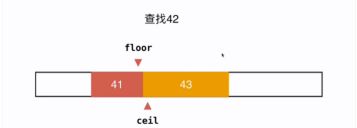
当在数组中查找的元素不存在的时候,(如查找42),上文的算法得到的是-1,但是定义floor和ceil后,如图,floor返回的是42之前的元素(41)的元素的最后一个位置,ceil返回的是42之后的元素(43)的第一个位置。
5.2 二分搜索树基础(Binary Search Tree)

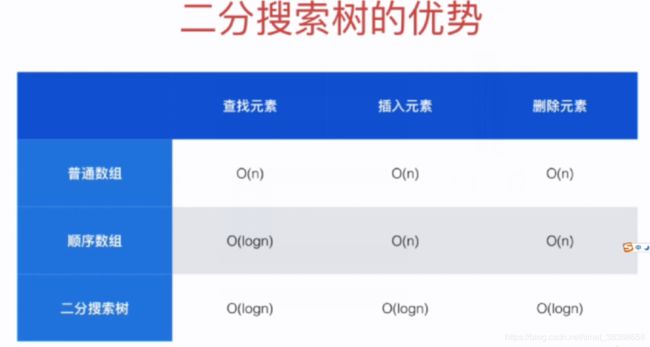
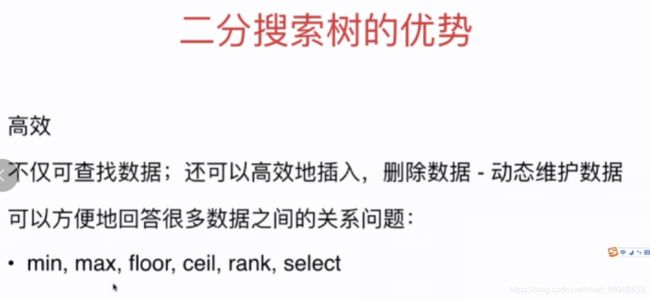
二分搜索树定义: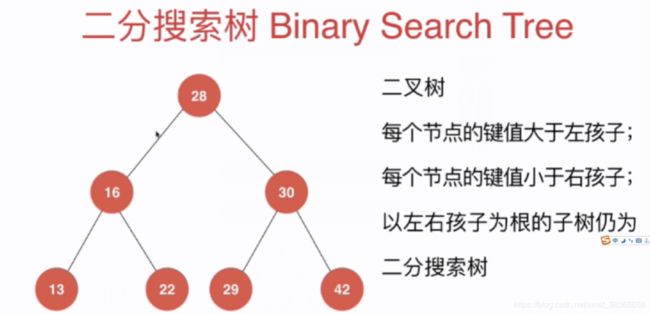
首先他依然是一颗二叉树
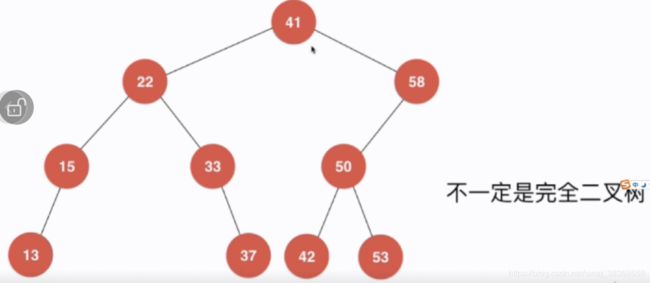
但是。二分搜索树不一定是一个完全二叉树,所以不能用数组,通常使用node结点表示key-value对,使用指针表示结点之间的关系。
[注]:上述结点的值为key的值
5-3 二分搜索树的节点插入
#ifndef BST_H_INCLUDED
#define BST_H_INCLUDED
#include5-4 二分搜索树的查找
二分查找树的包含contain和查找search同质
如上述代码。
